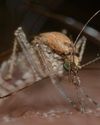Edible Insects: Future Food- Natural and Renewable Nutrients Resource
Scientific India
|July-August 2018
Ever heard of bug protein shake, earthworm noodles, tangy red ant eggs chutney, silkworm pupae pickle!!!
-

Here comes the era of new ingredients and delicacies in the Indian food palate. Yes!!! Edible insects are coming through as “silver bullets” to combat the ever growing problems of Indian population, poverty, diminishing natural resources and health concerns. They are an important source of protein and other nutrients and have high feed conversion efficiency and ability to feed on diverse food sources. They are perceived as a cheapest and convenient source of available, highly portable, natural and renewable nutrients resource and has ecological advantages over conventional protein sources such as poultry and meat i.e. could help tackle climate change by substantially reducing emissions linked to livestock production. Entomophagy (Greek term: “entomos” meaning insects; and “phagein” means “to eat”) is the consumption of insects as food. It is practiced in many countries around the world but predominantly in parts of Asia, Africa and Latin America. Globally, there are more than 1000 edible insects, of which, a total of 255 edible insects were recorded in different parts of India. Among the ethnic people of India, the tribes of Arunachal Pradesh (about 158 species) far outnumber others in the edible insects taken as food. This is followed by Manipur, Assam and Nagaland (16 to 40 insect species). In Kerala, Madhya Pradesh, Odisha, Tamil Nadu and Karnataka, too, found evidence of six insect species being eaten. Globally, the most common insects consumed are beetles (Coleoptera), beside this, other groups of edible insects are 1) Lepidoptera - caterpillar 2) Hymenoptera
यह कहानी Scientific India के July-August 2018 संस्करण से ली गई है।
हजारों चुनिंदा प्रीमियम कहानियों और 10,000 से अधिक पत्रिकाओं और समाचार पत्रों तक पहुंचने के लिए मैगज़्टर गोल्ड की सदस्यता लें।
क्या आप पहले से ही ग्राहक हैं? साइन इन करें
Scientific India से और कहानियाँ
Scientific India
Japanese physicists were the first to measure the most tolerant entanglement state, the W state
There are many unusual things that happen in the world of quantum physics.
3 mins
September - October 2025

Scientific India
The Fifth Force: Could It Unlock the Secret of Dark Matter?
What if the universe is powered by a force we've never seen before? For centuries, science has explained nature with four fundamental forces.
3 mins
September - October 2025

Scientific India
A flu test you can chew
As flu season nears in the northern hemisphere, scientists are exploring a surprising new way to detect infection: through taste.
1 mins
September - October 2025

Scientific India
Lab-Grown Kidney Brings Artificial Organ Dream Closer to Reality
In a major leap toward bioengineered organ replacement, scientists have successfully grown human kidney 'assembloids' in the laboratory that mimic key structural and functional features of natural kidneys.
1 min
September - October 2025

Scientific India
Your pumpkin might be hiding a toxic secret
Pumpkins, squash, zucchini, and other members of the gourd family have a surprising trait: they can take up pollutants from the soil and store them in their edible parts.
1 mins
September - October 2025

Scientific India
2025 Nobel Prize in Physics Reveals Quantum Secrets in Superconducting Circuits
The 2025 Nobel Prize in Physics has been awarded to John Clarke, Michel H. Devoret, and John M. Martinis for their pioneering experiments that brought quantum mechanics from the invisible atomic world to the macroscopic scale a system large enough to hold in your hand.
1 mins
September - October 2025

Scientific India
Genomic Evidence Redefines the Evolutionary Age of Mosquitoes
A new genetic analysis has shaken up what we thought we knew about one of humanity's most notorious pests the mosquito.
1 min
September - October 2025

Scientific India
Nobel Prize in Chemistry 2025: Building Molecular Architectures with Room to Breathe
In a scientific breakthrough that bridges molecular design with planetary-scale problems, the 2025 Nobel Prize in Chemistry has been awarded to Susumu Kitagawa, Richard Robson, and Omar Yaghi.
1 mins
September - October 2025

Scientific India
Guardians of Immunity: Nobel Prize 2025 Honors Discoveries that Keep the Immune System in Check
The 2025 Nobel Prize in Physiology or Medicine has been awarded to Mary E. Brunkow, Fred Ramsdell, and Shimon Sakaguchi for their groundbreaking discoveries in the field of peripheral immune tolerance a crucial mechanism that prevents the body's immune system from turning against itself.
1 mins
September - October 2025

Scientific India
'Is cold nuclear fusion feasible?
In early May 1989, two chemists from the University of Utah, Pons and Fleischmann, arrived in Washington, U.S.A. The aim is to present their findings to members of the US Congress.
3 mins
September - October 2025
Translate
Change font size

